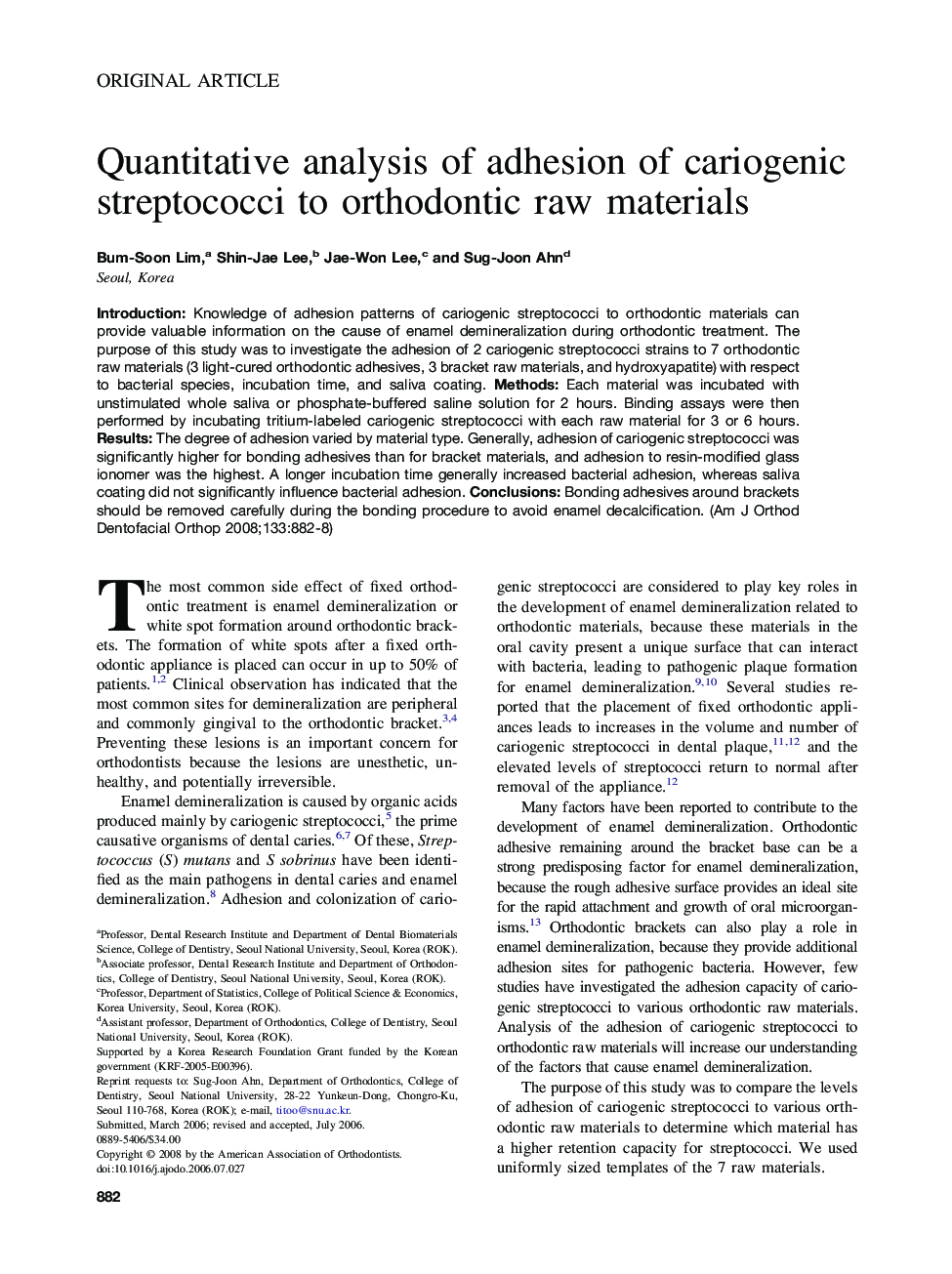| Article ID | Journal | Published Year | Pages | File Type |
|---|---|---|---|---|
| 3119099 | American Journal of Orthodontics and Dentofacial Orthopedics | 2008 | 7 Pages |
Introduction:Knowledge of adhesion patterns of cariogenic streptococci to orthodontic materials can provide valuable information on the cause of enamel demineralization during orthodontic treatment. The purpose of this study was to investigate the adhesion of 2 cariogenic streptococci strains to 7 orthodontic raw materials (3 light-cured orthodontic adhesives, 3 bracket raw materials, and hydroxyapatite) with respect to bacterial species, incubation time, and saliva coating. Methods:Each material was incubated with unstimulated whole saliva or phosphate-buffered saline solution for 2 hours. Binding assays were then performed by incubating tritium-labeled cariogenic streptococci with each raw material for 3 or 6 hours. Results:The degree of adhesion varied by material type. Generally, adhesion of cariogenic streptococci was significantly higher for bonding adhesives than for bracket materials, and adhesion to resin-modified glass ionomer was the highest. A longer incubation time generally increased bacterial adhesion, whereas saliva coating did not significantly influence bacterial adhesion. Conclusions:Bonding adhesives around brackets should be removed carefully during the bonding procedure to avoid enamel decalcification.
